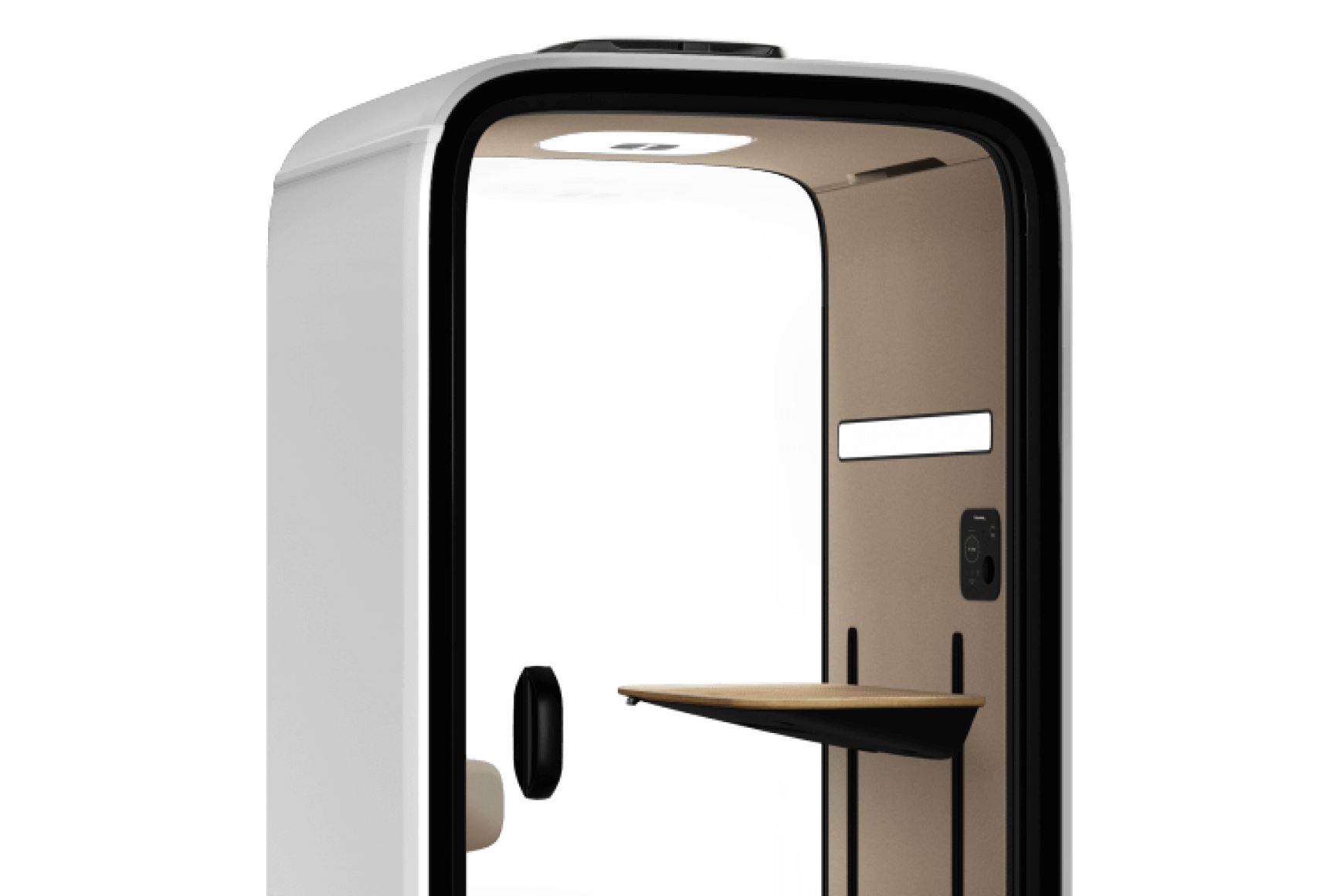Until recently, there was not a suitable way to measure the level of sound insulation of enclosed spaces, including acoustic pods. The new ISO 23351-1 standard accurately measures the level of sound insulation of furniture ensembles, including semi-open and closed pods. It produces a single figure called speech level reduction (DS,A) that describes the degree of speech privacy the product being tested provides.
Turku University of Applied Sciences recently completed a study in which the speech level reduction of Framery O and ten other best-selling office phone booths in the market were measured through this new industry standard. The study proves that Framery O has the highest level of performance of all the tested pods with a speech level reduction of 30.3 dB.

Framery O was Superior to All Other Competitors as Demonstrated in the Table Above.
Alongside Framery, other manufacturers in the study included: Frem, König+Neurath, Martela, Mikomax, MuteDesign, Narbutas, ROOM, Sedus, Silen and Vetrospace. The “announced figures” listed out in the table above are the dB numbers that the listed companies use publicly on their website or materials to describe their products’ acoustic performance. The DS,A figures to the left of the announced figures demonstrate the lack of accuracy in the numbers reported by brands before the new standard was released. The results were analyzed to further the discussion of the practical significance of speech level reduction and properties of pods that influence sound insulation.
Various standards and ratings have been used in the past to describe the level of sound insulation of phone booths and meeting pods, making it difficult to compare products without testing them. An “apples to apples” comparison of figures has not been possible, until now. The new ISO 23351-1 standard makes it much easier to choose the right product for your needs. Having a standard in place now simplifies the process and ensures that the customers will be happy with their product because they’ll know exactly what to expect!
“Transparency and happiness are at the core of what we strive for at Framery, so having a new standard that further ensures customer satisfaction through those ideals is really exciting for our team,” says Lasse Karvinen, Head of Products at Framery. “We’re honored to be part of this progressive step in acoustic testing and are looking forward to all of the industry research and new discoveries to come.”

Framery O can be placed right next to workstations. Single-person pods with lower-level speech privacy have to be placed further away from their users.
In order to get the optimal use of pods, they must be placed close to users in the middle of an office. Pods have to provide a certain level of sound insulation so that the people working next to them will not be able to overhear discussions that are being had inside the pod and vice versa. This is especially true for single-person pods that are used on-demand because their use depends on them being readily available.
“A speech level reduction of 30 dB corresponds with the practical requirement of sound insulation,” explains Karvinen. “If the speech level reduction is lower and not this satisfactory, then the pod will have to be moved further away from the people working outside of them.”
Until recently, there was not a suitable way to measure the level of sound insulation of enclosed spaces, including acoustic pods. Quantities like sound reduction index (R) and sound transmission class (STC) have been used, but they only describe the ability of a single component, such as a wall, to reduce sound passing through it. In North America, ASTM E596-96 has been used before to determine noise isolation class (NIC) figures for pods, but unlike ISO 23351-1, it doesn’t put emphasis on the sound spectrum of speech, and because of that, NIC isn’t as good of an indicator for speech privacy as DS,A.
ISO 23351-1 was released by ISO, an independent, non-governmental international organization with a membership of 165 national standards bodies. Through its members, it brings together experts to share knowledge and develop voluntary, consensus-based, market relevant International Standards that support innovation and provide solutions to global challenges.
Specifically, the testing method of ISO 23351-1 was developed by Valtteri Hongisto and his team from Turku University of Applied Sciences. Framery supported the development of the new standard by sharing lessons learned during the history of the company and providing resources for the validation of the testing method. This included shipping a Framery O to ten acoustic laboratories across Europe to ensure that test results were in line with each other.
For more information, please check out the Turku University of Applied Sciences study.







